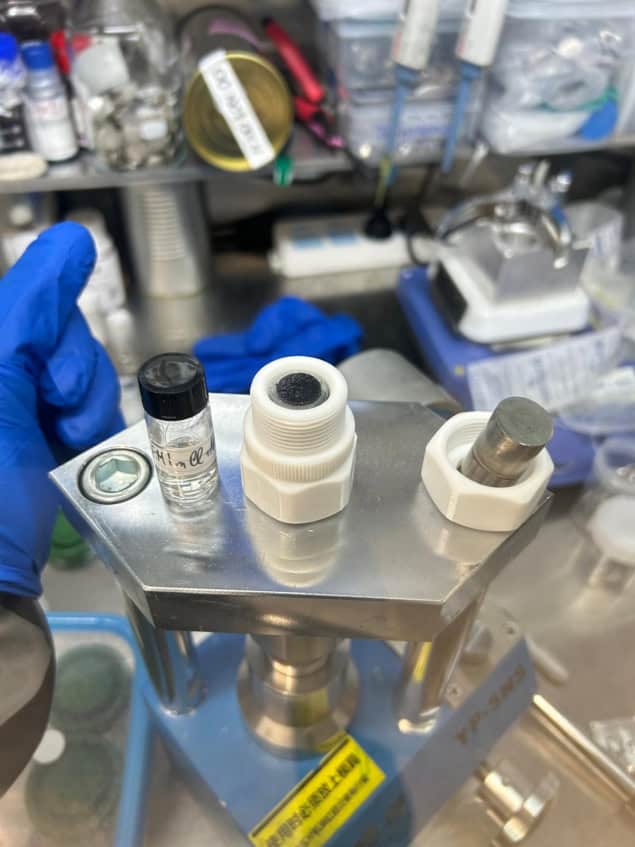When charging quantum batteries, decoherence is a friend, not a foe
Devices like lasers and other semiconductor-based technologies operate on the principles of quantum mechanics, but they only scratch the surface. To fully exploit quantum phenomena, scientists are developing a new generation of quantum-based devices. These devices are advancing rapidly, fuelling what many call the “second quantum revolution”.
One exciting development in this domain is the rise of next-generation energy storage devices known as quantum batteries (QBs). These devices leverage exotic quantum phenomena such as superposition, coherence, correlation and entanglement to store and release energy in ways that conventional batteries cannot. However, practical realization of QBs has its own challenges such as reliance on fragile quantum states and difficulty in operating at room temperature.
A recent theoretical study by Rahul Shastri and colleagues from IIT Gandhinagar, India, in collaboration with researchers at China’s Zhejiang University and the China Academy of Engineering Physics takes significant strides towards understanding how QBs can be charged faster and more efficiently, thereby lowering some of the barriers restricting their use.
How does a QB work?
The difference between charging a QB and charging a mobile phone is that with a QB, both the battery and the charger are quantum systems. Shastri and colleagues focused on two such systems: a harmonic oscillator (HO) and a two-level system. While a two-level system can exist in just two energy states, a harmonic oscillator has an evenly spaced range of energy levels. These systems therefore represent two extremes – one with a discrete, bounded energy range and the other with a more complex, unbounded energy spectrum approaching a continuous limit – making them ideal for exploring the versality of QBs.
In the quantum HO-based setup, a higher-energy HO acts as the charger and a lower-energy one as the battery. When the two are connected, or coupled, energy transfers from the charger to the battery. The two-level system follows the same working principle. Such coupled quantum systems are routinely realized in experiments.
Using decoherence as a tool to improve QB performance
The study’s findings, which are published in npj Quantum Information, are both surprising and promising, illustrating how a phenomenon typically seen as a challenge in quantum systems – decoherence – can become a solution.
The term “decoherence” refers to the process where a quantum system loses its unique quantum properties (such as quantum correlation, coherence and entanglement). The key trigger for decoherence is quantum noise caused by interactions between a quantum system and its environment.
Since no real-world physical system is perfectly isolated, such noise is unavoidable, and even minute amounts of environmental noise can lead to decoherence. Maintaining quantum coherence is thus extremely challenging even in controlled laboratory settings, let alone industrial environments producing large-scale practical devices. For this reason, decoherence represents one of the most significant obstacles in advancing quantum technologies towards practical applications.
Shastri and colleagues, however discovered a way to turn this foe into a friend. “Instead of trying to eliminate these naturally occurring environmental effects, we ask: why not use them to our advantage?” Shashtri says.
The method they developed speeds up the charging process using a technique called controlled dephasing. Dephasing is a form of decoherence that usually involves the gradual loss of quantum coherence, but the researchers found that when managed carefully, it can actually boost the battery’s performance.
Dissipative effects, traditionally seen as a hindrance, can be harnessed to enhance performance
Rahul Shastri
To understand how this works, it’s important to note that at low levels of dephasing, the battery undergoes smooth energy oscillations. Too much dephasing, however, freezes these oscillations in what’s known as the quantum Zeno effect, essentially stalling the energy transfer. But with just the right amount of dephasing, the battery charges faster while maintaining stability. By precisely controlling the dephasing rate, therefore, it becomes possible to strike a balance that significantly improves charging speed while still preserving stability. This balance leads to quicker, more robust charging that could overcome challenges posed by environmental factors.
“Our study shows how dissipative effects, traditionally seen as a hindrance, can be harnessed to enhance performance,” Shastri notes. This opens the door to scalable, robust quantum battery designs, which could be extremely useful for energy management in quantum computing and other quantum-enabled applications.
Implications for scalable quantum technologies
The results of this study are encouraging for the quantum-technology industry. As per Shastri, using dephasing to optimize the charging speed and stability of QBs not only advances fundamental understanding but also addresses practical challenges in quantum energy storage.
“Our proposed method could be tested on existing platforms such as superconducting qubits and NMR systems, where dephasing control is already experimentally feasible,” he says. These platforms offer experimentalists a tangible starting point for verifying the study’s predictions and further refining QB performance.
Experimentalists testing this theory will face challenges. Examples include managing additional decoherence mechanisms like amplitude damping and achieving the ideal balance of controlled dephasing in realistic setups. However, Shastri says that these challenges present valuable opportunities to refine and expand the proposed theoretical model for optimizing QB performance under practical conditions. The second quantum revolution is already underway, and QBs might just be the power source that charges our quantum future.
The post When charging quantum batteries, decoherence is a friend, not a foe appeared first on Physics World.
